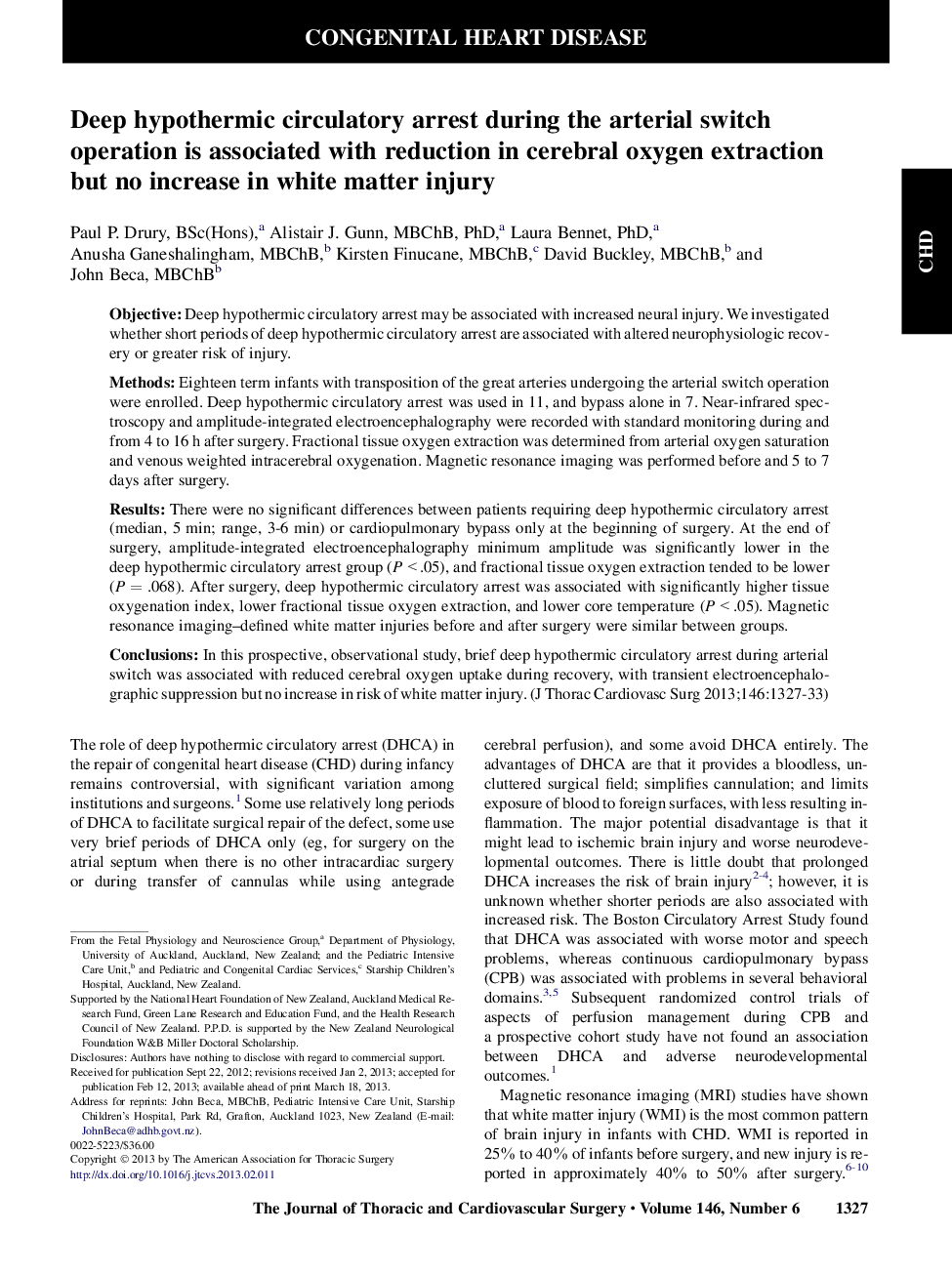| Article ID | Journal | Published Year | Pages | File Type |
|---|---|---|---|---|
| 2980831 | The Journal of Thoracic and Cardiovascular Surgery | 2013 | 7 Pages |
ObjectiveDeep hypothermic circulatory arrest may be associated with increased neural injury. We investigated whether short periods of deep hypothermic circulatory arrest are associated with altered neurophysiologic recovery or greater risk of injury.MethodsEighteen term infants with transposition of the great arteries undergoing the arterial switch operation were enrolled. Deep hypothermic circulatory arrest was used in 11, and bypass alone in 7. Near-infrared spectroscopy and amplitude-integrated electroencephalography were recorded with standard monitoring during and from 4 to 16 h after surgery. Fractional tissue oxygen extraction was determined from arterial oxygen saturation and venous weighted intracerebral oxygenation. Magnetic resonance imaging was performed before and 5 to 7 days after surgery.ResultsThere were no significant differences between patients requiring deep hypothermic circulatory arrest (median, 5 min; range, 3-6 min) or cardiopulmonary bypass only at the beginning of surgery. At the end of surgery, amplitude-integrated electroencephalography minimum amplitude was significantly lower in the deep hypothermic circulatory arrest group (P < .05), and fractional tissue oxygen extraction tended to be lower (P = .068). After surgery, deep hypothermic circulatory arrest was associated with significantly higher tissue oxygenation index, lower fractional tissue oxygen extraction, and lower core temperature (P < .05). Magnetic resonance imaging–defined white matter injuries before and after surgery were similar between groups.ConclusionsIn this prospective, observational study, brief deep hypothermic circulatory arrest during arterial switch was associated with reduced cerebral oxygen uptake during recovery, with transient electroencephalographic suppression but no increase in risk of white matter injury.
